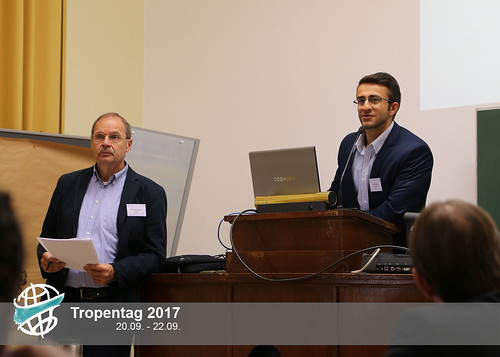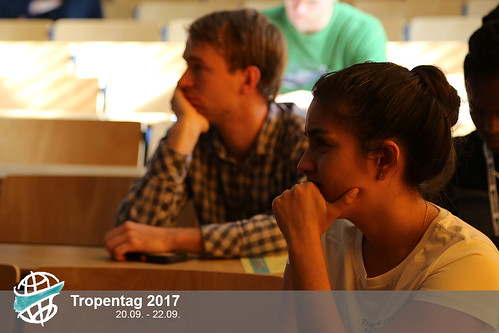Oral Presentations 2017
A Changing Environment Changing Lives
Sun, 09/24/2017 - 13:06 — giulia.rotanodariIn many countries, migration is a growing phenomenon because of political, economic and environmental reasons. In the last few decades, sudden or long-term changes in the environment are further exacerbating the often already precarious conditions in Sub-Saharan Africa, shaping the livelihoods of subsistence farmers in particular. This is shown by a study conducted in Ethiopia by Juliane Groth, from the Helmholtz Centre for Environmental Research (UFZ) during the "Institutions and Livelihood" oral presentation session .
By analyzing the reasons that force rural people to migrate, Groth found that this phenomenon is strongly linked to land degradation and shifts in rainfall seasonality. These are the drivers of the decline in livestock quantity and agricultural production. As a result, farmers are looking for fast growing crop varieties that allow for cultivation in a shortened rainy season.
Groth's study is evidence of the need for global intervention with programs to mitigate the impacts of climate change, especially by working with farmers to develop and introduce faster growing crops.
It's All About the Genes
Sun, 09/24/2017 - 12:23 — kristianj71I’m preaching to the choir, but to repeat for the nth time, climate change promises greater weather unpredictability and extreme temperatures worldwide. One strategy to mitigate the impact lies in mining genetic resources, gene banks and land races, for useful plant characteristics.
Farmers for thousands of years have carefully selected plants best fit to withstand the harsh environments found on their fields. This led to breathtaking genetic variety, as each field has its own unique microclimate. The resulting land races, often ignored due to their lower productivity, are an unexploited resource that could yield tomorrow’s answers. Dr. Mathias Wissuwa of JIRCAS in his oral presentation in “Genetic Resources and Abiotic Stresses” emphasized the need to tap the hidden genetic potential in land races and gene bank accessions.
Advances in genome sequencing technologies have lowered costs to a point where thousands of gene bank accessions can be mapped to find rare alleles that could enhance nutrient capture, or increased tolerance to drought. Once identified, market assisted selection (MAS) can be used to improve the crop. IRRI used this method to first identify the SUB1 gene, which gives flood tolerance, and then breed it into commonly grown varieties, creating ‘scuba’ rice. Dr. Wissuwa and JIRCAS has made promising headway in identifying a gene that promotes crown root growth to increase nutrient capture efficiency of zinc and phosphorous. At the end of his presentation, he went to great lengths to stress MAS had nothing to do with GMOs.
Moving Pictures
Fri, 09/22/2017 - 13:04 — schumacherlydiaInstead of presenting another powerpoint, Frederik van Oudenhoven impressed the audience with his moving pictures - a movie about the villages of the Pamir Mountains in Afghanistan and Tajikistan. This vivid movie not only touched me, but the majority of the audience, measured by the loud and lasting applause afterwards.
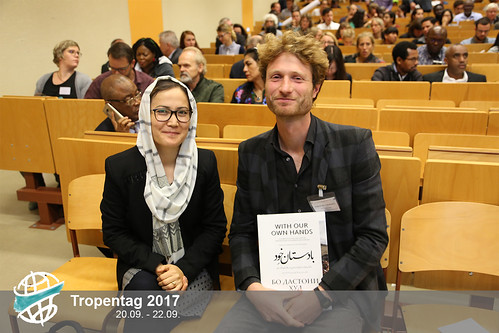
The Dutch film maker and biologist has devoted the last few years to understanding, preserving and publishing the traditional knowledge of people living in the isolated villages around the Afghan-Tajikistan border. Instead of focusing on the numbers of unemployed, undernourished and illiterate, he turned the camera to not only stunning landscapes but agricultural production, food processing, food culture and the people behind each stage. Further, he emphasized the beauty of diversity, whether it was biodiversity or cultural diversity. His film suggest with the loss of diversity we also lose beauty.
An Apology Poem to Institutions and Livelihoods
Fri, 09/22/2017 - 12:36 — megreslerYes, I attended Oral four in LH8.
My attention, I'll admit, truly a sad state.
Would you mind just looking on Twitter?
That global forum clogged with litter.
Let's move to Plenary 2, lest we be late.
Malnutrition in Africa: Oh, the Irony!
Fri, 09/22/2017 - 12:05 — lizkusiaIt is 8:00 a.m. and I am already at the Agrobiodiversity and Nutrition diversity poster session. Today, I am doubling as a student reporter and a poster presenter. The room is filled with enthusiastic faces, hungry for information on the topic. The session started on high note with a presentation on potato farming in Peru. However, something caught my eye throughout the presentations. All the other topics, including mine were about Africa. One of the speakers swept me away with his research on biofortification of cassava. This is good news! However, allow me to talk about the other side of the story.

Agroforestry Won't Save the World, but our Planet
Thu, 09/21/2017 - 19:06 — marlemkeAccording to the numerous audience's questions, agroforestry is in demand.
Of course! In terms of water and nutrient efficiency, trees are optimum, and hence are key for solving problems like nitrogen leaching and drought mitigation. Moreover, they can provide an additional income source for (smallholder) farmers in terms of fruit, medicine and timber. Their ecological value cannot only be reduced to shade provision and hydraulic lift for water and plant nutrients, they also function as a shelter belt for annual crops nearby. Trees also drastically reduce wind speed, minimizing transpiration. Niels Thevs from ICRAF reinforced these points in his oral presentation.
As far as resource efficiency is concerned, trees can substantially contribute to mitigate climate change and secure the existence of smallholders.
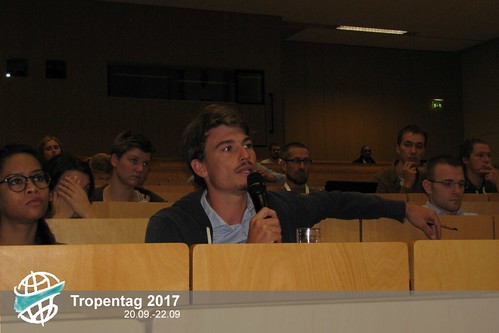
Ending Hunger... or Writing Papers?
Thu, 09/21/2017 - 18:09 — megreslerLike many of my peers in attendance at for the "BMEL Session," oral presentations, I have spent the last year wrestling with one quite specialized, and quite complex, research problem. Mine falls under the umbrella question, "What are pathways towards sustainable food system transformation?". Safely contained within this one research question, I am often tempted to isolate the subtleties of my research from the sweeping and disastrous reality, hunger. Occasionally lost within an abstract cloud of data and theory, I try to remind myself of the necessity of resituating my research within the context of the larger research environment.
The logical, but not always obvious, next question: Should we extend this interrogation one step further and question how our research, our knowledge, and our resources, will be used in application to better society? Are we making change, or are we just writing papers?
The Ice is Melting! Perceptions of Climate Change in Peru
Thu, 09/21/2017 - 18:01 — giulia.rotanodari71% of tropical glaciers in South America are found in Peru and the ongoing increase in the average global temperature is causing their retreat in many areas, threatening livelihoods.
Yaremi Karina Cruz Rivera, from Cologne University of Applied Sciences, analyzed the perceptions of climate change of four communities living in the surrounding area of the Chicon glacier, one of the highest tropical glaciers in Peru, and the source of water for the Chicon Watershed. The four communities make use of the water in this area for human consumption and agriculture.
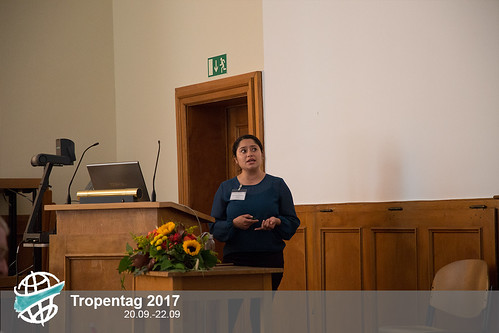
The aim of the investigation was to assess the awareness of the communities, in particular of women, of the hazards linked to climate change. Results showed that people perceive that temperatures are increased and extreme climactic events such as droughts, floods and frosts have occurred frequently in the last decade, but drought is the most imminent challenge.
The four communities demonstrated an awareness of the threat of climactic change to agriculture and their livelihoods, leading to an interest in implementing activities and ecological approaches, such as afforestation in the watershed together with the local government.





